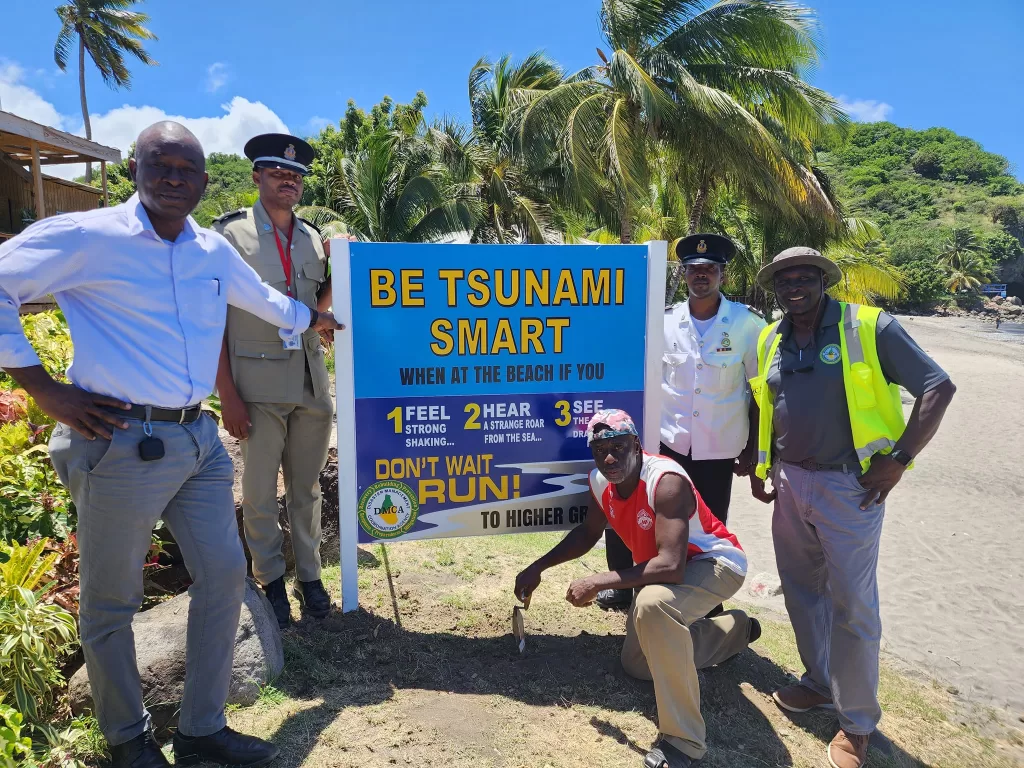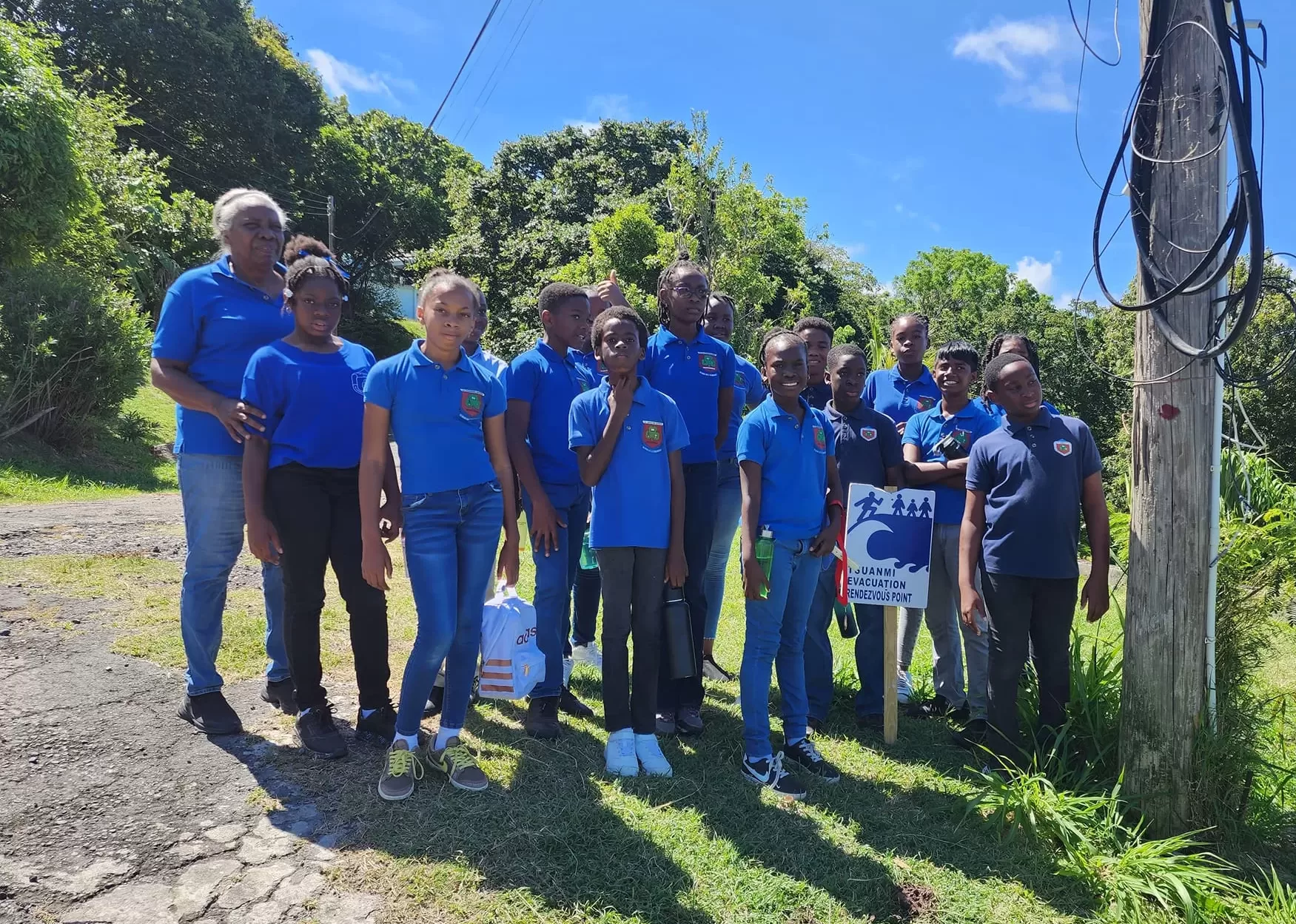Pupils from St Augustine Catholic Primary School practised what they would do in the event of a tsunami at Woodlands Beach this week.
The Disaster Management Coordination Agency simulated a high magnitude underwater earthquake taking place during a field trip.
The 15 grade six youngsters observed the natural warning signs, alerted their teacher and moved quickly to higher ground, following evacuation route signs to Muster Point.
According to a press release from the DMCA, the drill on 21 March, which formed part of the annual Caribe Wave exercise, was a success.
“The students were keenly aware of the evacuation route signs leading to the designated rendezvous point and followed them closely to reach safely in good time,” it said.
“Teacher Vernetta Williams then performed a head count to ensure no one was missing.”
Community resilience
The DMCA designed the drill to help the students understand tsunami warning signs, what to do, and how to stay safe during a real event.
It also aims to build community resilience and safeguard people on Montserrat’s shores, especially in areas where tsunamis can have a great impact.
During the day the DMCA also erected a tsunami warning sign in Little Bay to ensure residents and visitors of Montserrat understand what to do in the event of a tsunami.

Caribe Wave is a tsunami exercise held annually across the Caribbean under the direction of UNESCO and the Pacific Tsunami Warning Center.
A simulated tsunami event is presented to test preparedness and response protocols in emergency communications and evacuation procedures.
Vulnerable island
Montserrat has had tsunami events in the past.
Eruption at Soufriere Hills volcano has generated one, while the island’s geographical location makes some coastlines vulnerable to tsunamis triggered elsewhere.
A tsunami is a series of travelling waves of extremely long length and period, usually generated by earthquakes occurring below or near the ocean floor.
Volcanic eruptions, submarine landslides, and coastal rock falls can also generate tsunamis, as can a large meteorite impacting the ocean, the DMCA said.
They can occur at any time of the year, day or night, but they are not very common, occurring about once a year.
Tsunamis have claimed lives, demolished homes and destroyed communities across the world.
The main concept of tsunami preparedness is that once a person receives a warning, they should head to higher ground.





